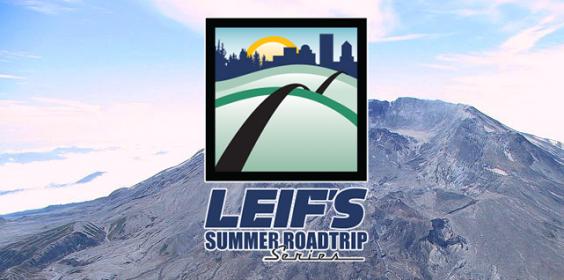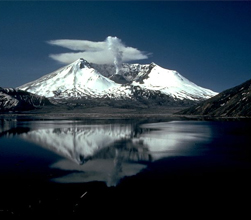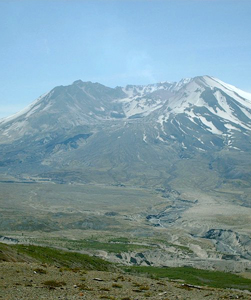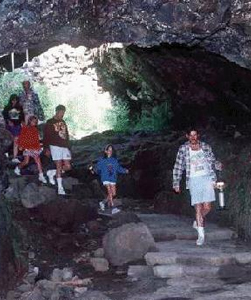Choose Your Own Volcanic Adventure: A Multi-Route Mount St. Helens Road Trip

The violent eruption of Mount St. Helens on May 18, 1908 may be 30 years past, but the ever-changing landscape of the forest and lava-covered land offers fresh views and calls for another road trip if you think you’ve seen all there is to see at Mount St. Helens before.
About Leif’s Summer Roadtrip Series
This summer we will publish a series of articles that combine two of my greatest passions; cars and the Pacific Northwest.
Should you decide to try one or a few of the overnight trips we’ll present, you and your travel companions will enjoy The Area’s less widely known but truly iconic scenery and experiences en route to your destination.
If you find these articles valuable or have suggestions for new ideas or improvements, we would love to hear from you. Please email us at webmail@leifs.com.
– Leif
You can explore the land surrounding this National Monument with a weekend road trip and build your own itinerary, approaching the volcano from the north, the south, or any angle, driving an 8-hour loop from Portland, around the east side of the volcano to the northern visitor centers before returning to Portland. Whichever route you choose, accommodations along the way can be found at campgrounds and RV parks, or closer to Interstate 5 at hotels and other lodging areas.
The Routes
Route 1: North Side
The most popularly visited side of the volcano is the northwestern side, where the main visitor centers are located, leading up to and inside the blast zone. Following this route from Portland, you’ll head north on I-5 to Castle Rock then east on WA-504, stopping at the visitor centers at Silver Lake, the Hoffstadt Bluffs, the Forest Learning Center and the Johnston Ridge Observatory, a route totaling just under 2 hours one-way (109 miles) from Portland.
Route 2: South Side
A southern approach to the volcano takes you past lakes and hiking trails, before arriving at the less-visited Windy Ridge Observatory on the east side of Mount St. Helens. From Portland, drive north on I-5 to Woodland, then east on WA-503 to Ape Cave, Lava Canyon, and the Windy Ridge Observatory, a total of just over 3 hours one-way (116 miles) from the metro area.

Route 3: The Loop
Combine both routes to loop around the volcano for a look at the varied landscapes and a comprehensive understanding of the geologic and natural history of this now sleeping giant. To complete the 8-hour (360-mile) loop, follow the southern route to the Windy Ridge Observatory then take Forest Roads NF-99 and NF-25 for 16 and 17 miles respectively, to reach WA-131 and a connection to US-12, which you can follow back to I-5 or to WA-505 a highway that connects to WA-504, the main route to the visitor centers at the north side of the volcano. After reaching the end of the road at the Johnston Ridge Observatory retrace your path back down WA-504 to I-5 and down to Portland. If you want to try this marathon road trip the only time to do it is in the summer when most Forest Roads will be open.
Destinations
The North Side
Travel along WA-504, stopping at the four visitor centers along the 52-mile route to learn about the volcano’s natural and cultural history as you slowly approach this stunning National Monument. Each of the visitor centers is designed to offer a different perspective on Mount St. Helens, beginning before the 1980 eruption and capturing the events leading up to the eruption, and the eruption itself as well as the immediate impact, and the growth and re-vegetation that has taken place since.
Mount St. Helens Visitor Center at Silver Lake:
Just 5 miles from I-5, this visitor center will provide your first insight into Mount St. Helen’s history before you venture closer. Stop to view the interpretive exhibits, watch an informative film, and explore the hiking trails nearby.
Hoffstadt Bluffs Visitor Center:
About 27 miles from I-5, off WA-504, you’ll reach this visitor center with an observation deck offering views of the mountain and the flood plain that was overtaken by mudflows during the eruption. This center also houses an exhibit depicting the mountain’s landscape and cultural significance as an outdoor recreation hotspot before the blast. The Hoffstadt Bluffs Visitor Center is a great stop for lunch or dinner at the Fire Mountain Grill.

Forest Learning Center:
This free museum and gift shop inside the blast zone, 33 miles from I-5, provides the most extensive lesson in the geologic and natural history of the volcano, park, and forest. The center documents the immediate effects of the blast on the landscape in a video documentary, and features exhibits that recreate the forest prior to and following the blast. The Forest Learning Center’s hands-on interactive exhibits in the Kids Room give children a chance to touch lava rocks, learn about the animals of the region, and understand how trees grow.
Johnston Ridge Observatory:
Your last stop if not traveling onward by foot is this observatory inside the blast zone where a visitor center and auditorium provide a wealth of insight into the volcano’s history and eyewitness accounts of the explosion. Don’t leave without watching the incredible video of the eruption. Continue onward for a short hike from the observatory for views of the lava dome, crater, pumice plain, and landslide deposit on the observatory’s half-mile trail.
The South Side
Visit the less-affected side of the volcano to explore the more ancient past of Mount St. Helens and to enjoy an up-close experience with the volcanic landscape, hiking through lava tubes, down into a gorge created by lava flow, and across plains and forests affected by the 1980 eruption. While the south side of the volcano has fewer visitor centers to learn about the eruption, it does offer a chance to explore the area independently and with fewer crowds.
Ape Caves:
These two lava tubes are named after the Mount St. Helens Apes, an outdoor club that discovered these trails running beneath lava beds in the 1950s. The tubes are accessed via a ladder descent which brings you into total darkness, so be sure to pack a flashlight or rent a lantern from the Forest Service. You can visit both tubes by following the 1.3-mile trail through old growth forests that connect each of the cave entrances.

Lava Canyon Trail and Interpretive Site:
Learn about Mount St. Helens more distant eruptive past while walking along the trail through this mudflow canyon. You’ll see the remains of the volcano’s ancient lava flow paths from hundreds of thousands of years ago. The interpretive trail is paved and is just 1-mile-long roundtrip, while the main trail continues on from the interpretive trail an additional 4 miles roundtrip, through lava fields, over a suspension bridge, and into Lava Canyon Gorge descending a long ladder.
Windy Ridge Observatory:
This viewpoint is as close as you can get to Mount St. Helens by car, from any direction, and is accessible from Forest Road 99 during the summer only. The observatory offers views overlooking Spirit Lake and the less-affected side of the volcano. During July and August, interpretive talks are given by the Forest Service. For some of the most spectacular views of the mountain itself, looking into the crater, follow the 4-mile roundtrip trail from the parking area, to see the old logging road that many survivors used to flee the blast, and to view the horizontal forest, an area of trees blown sideways and lain down instantly from the superheated winds of the eruption.
Learn More:
USDA: Mount St. Helens National Monument
Cowlitz County Tourism: Visit Mt. St. Helens
Map
Lava Canyon Hiking Guide
Windy Ridge Trail Hiking Guide








